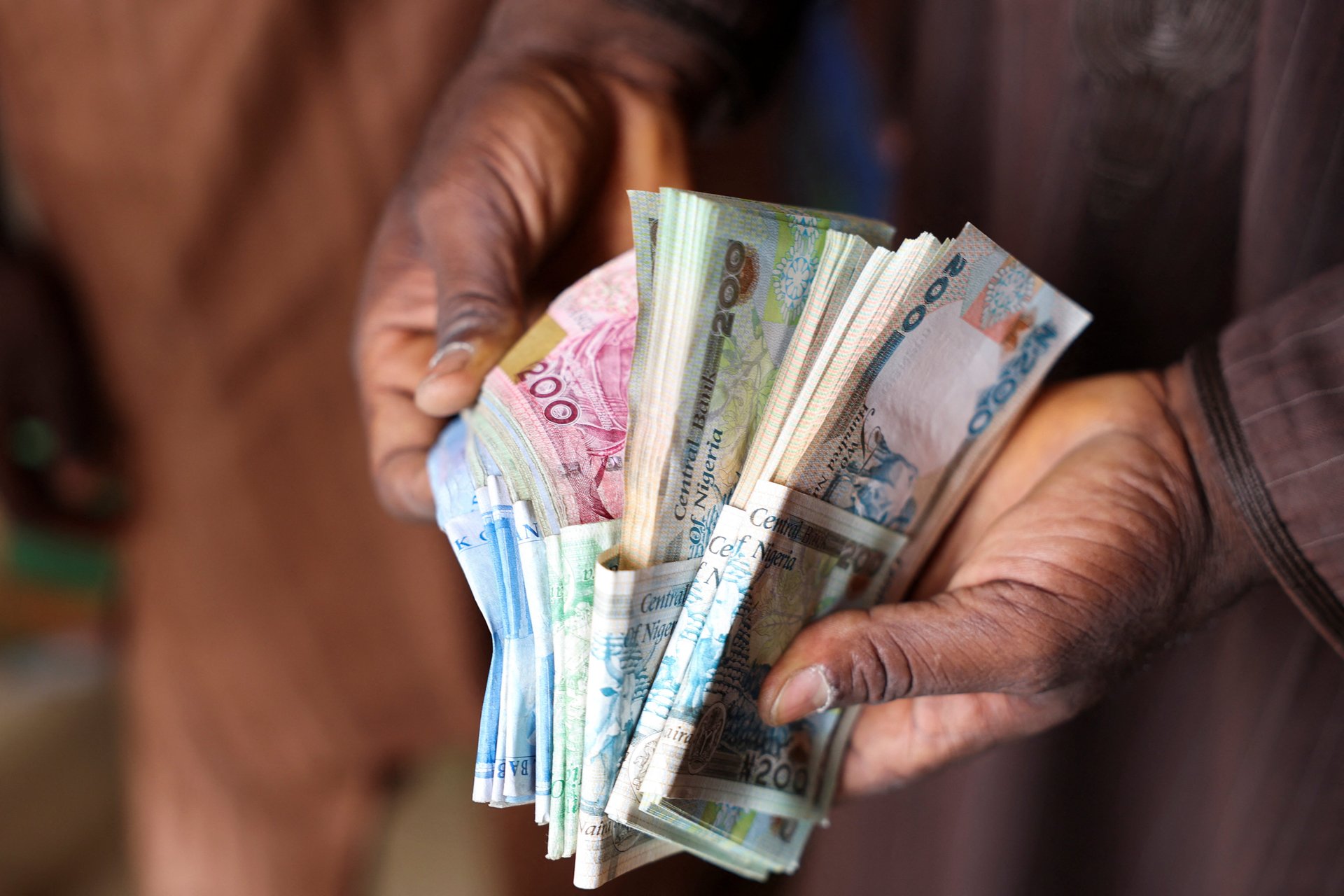Nigeria awaits a Supreme Court determining whether old naira banknotes should remain legal tender for longer
A rushed update to the banknotes' design resulted in cash shortages in the country

A cash shortage resulting from a rushed redesign of Nigeria’s main banknotes led several states to sue the government and the Central Bank of Nigeria to demand old banknotes remain legal tender for longer. The country’s Supreme Court is set to rule on the case on Friday (Mar. 3).
Suggested Reading
In October last year, the Central Bank of Nigeria and the government of president Muhammadu Buhari ordered that the naira 200, 500, and 1,000 banknotes should be redesigned to assert control over the cash circulating outside of the banking system ahead of the presidential election. The new designs were unveiled the following month, and a deadline for the old banknotes to be retired from circulation was initially set for Jan. 31, giving Nigerians just two months to change their cash or risk being stuck with useless paper.
Related Content
The move seemed rush in a country where 40% of the population is unbanked and where there’s only 4.5 bank branches for 100,000 adults. Even after Buhari extended the deadline by ten days, the governors of the states of Kaduna, Kogi, and Zamfara filed a lawsuit seeking the suspension of the policy, citing irregularities with its implementation, and people’s difficulties in accessing the new banknotes. The Supreme Court issued an order to suspend the policy’s implementation, but the central bank refused to comply claiming the issue fell outside the Supreme Court’s jurisdiction.
As more states joined the initial three plaintiff and the court examined the case, Nigerians have felt the impact of the central bank’s decision. New notes are just not entering circulation fast enough (some managers have been caught hoarding them), chaos has broken out outside banks and ATMs as cash-strapped citizens and businesses struggle to stay afloat. Rising tensions have led to a number of protests and attacks on banks, landing the currency issue to the top of new president Bola Tinubu’s priority list.
A brief timeline of the tussle over old and new naira notes
Oct. 26, 2022: The Central Bank of Nigeria (CBN) is authorized to redesign the 200, 500, and 1000 Nigerian naira banknotes.
Nov. 23, 2022: New 200-, 500- and 1,000-naira notes are introduced to fight counterfeits and help better implement monetary policy.
Jan. 31, 2023: Deadline by which old naira banknotes would stop being legal tender. Given “systemic and human difficulties encountered during implementation,” president Muhammadu Buhari extended that deadline by ten days, to Feb. 10.
Feb. 8, 2023: Supreme Court stops the government from implementing the Feb. 10 deadline. Even the International Monetary fund weighs in, asking the Nigerian government to extend the deadline.
Feb. 10, 2023: The central bank maintains the old banknotes are no longer legal tender.
Feb. 16, 2023: Buhari says in a speech that the old N200 banknote will remain legal tender for 60 more days, until April 10, to ease the transition, but Nigerians still in possession of other old notes should take them to the CBN for deposit. Meanwhile, at the supreme court hearing, seven states join the three initial states as co-plaintiffs, while Edo and Bayelsa states join the Federal Government as co-defendants.
Feb. 21, 2023: CBN calls out a fake press release saying old N500 and N100 notes will be released into circulation. It’s only the old N200 notes that are allowed.
Feb. 22, 2023: After yet another hearing, the court adjourns the suit for nearly two more weeks
Fun fact: Naira’s origin story
The word naira was coined by Obafemi Awolowo when he was the federal commissioner for finance between 1967 and 1971. The naira was launched as a currency by Shehu Shagari as minister of finance on Jan. 1, 1973.
Nigeria’s cash struggles, by the digits
78% to 85%: How much the proportion of currency outside banks grew from 2015 to 2022.
N3.23 trillion ($7 billion): Currency circulation as of October 2022, out of which only N500 billion was within the banking system, creating issues for financial policy and inflation management, according to Buhari
40%: Share of Nigeria’s population that doesn’t have bank accounts and relies on cash
21%: Nigeria’s inflation has hit a 17-year-high when the new banknotes entered in circulation in November
Quotable: Nigeria makes its own notes
“While this may not be apparent to many Nigerians, only 4 out of the 54 African countries print their currencies in their countries, and Nigeria is one. Hence, a majority of African countries print their currencies abroad and import them the way we import other goods. That is why it is with immense pride that I announce to you that these redesigned currencies are locally produced right here in Nigeria by our Security Printing and Minting PLC.” —Muhammadu Buhari
Related stories
🇳🇬 Nigeria’s surprise move against inflation: redesigning its currency notes